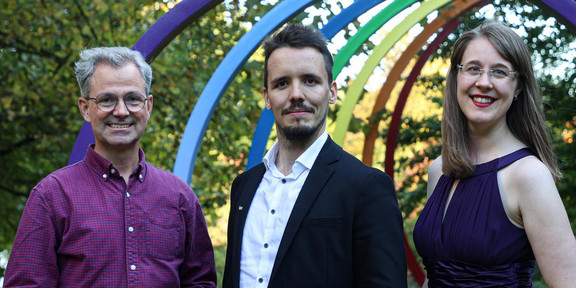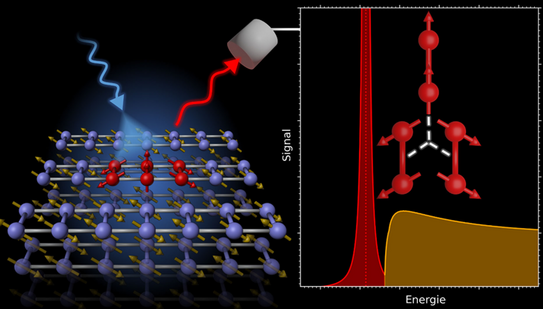International team predicts extraordinary three-particle state
- News
- Research

In nature, we encounter simple and highly complex bound states in every form of matter. For example, an electron is bound to the atomic nucleus of a hydrogen atom. The force that causes this is the attraction between two different charges according to Coulomb. But also the large protein molecules or the DNA and RNA molecules, which consist of many thousands of particles, are held together by the Coulomb force. This force always acts between exactly two partners: attracting in the case of plus and minus, repelling in the case of equal charges. Such an interaction is called pair interaction or two-particle interaction.
Unknown three-particle interaction discovered
The researchers from Dortmund, Cologne and Los Alamos have now predicted an unusual three-particle interaction for the first time: a solid-state system in which three particles bind. "In this state, the binding is not based on the attraction between two of these particles, but only occurs when all three particles are present and interact together," explains Prof. Götz Uhrig.
The solid-state system in which the new phenomenon was found is an antiferromagnetic spin conductor system. In these spin ladders, the magnetic excitations, so-called triplicons, are those particles that interact magnetically with each other. Dr Leanna Müller, who did her doctorate at the Department of Physics at TU Dortmund University, calculated the three-particle interaction. Gary Schmiedinghoff, a doctoral student at the department, decisively continued the calculations and evaluated the data. "It was only the close collaboration of my research group with colleagues in Los Alamos and Cologne that enabled us to derive these results and classify their predictions for experiments," emphasises Prof. Uhrig.
Experimental detection should succeed with X-rays
The team has also made concrete predictions as to how the unexpected state consisting of three triplicons can be experimentally detected in real materials in the future: To do this, high-energy photons - light particles - must be shot at a sample of the material in order to then measure in which directions and with which energies they continue to fly. The possibilities of this experimental technique (resonant inelastic X-ray scattering) are currently expanding rapidly, so that experimental proof of the triple bond of magnetic excitations can be expected in the next few years.
Contact for queries:


![Band structure of 2D semimetal based on HgTe quantum well. Experimental points are obtained from the analysis of the cyclotron resonance in the quasi-classical approximation. Solid lines are predictions of the kp theory with no free parameters. Splitting of the conduction (e1,2) and valence (h1) band is due to the quantum confinement. [J. Gospodaric, AP, et al., PRB 104, 115307].](/storages/physik/_processed_/b/5/csm_Kolloquium_Pimenov_0fa7761647.png)








